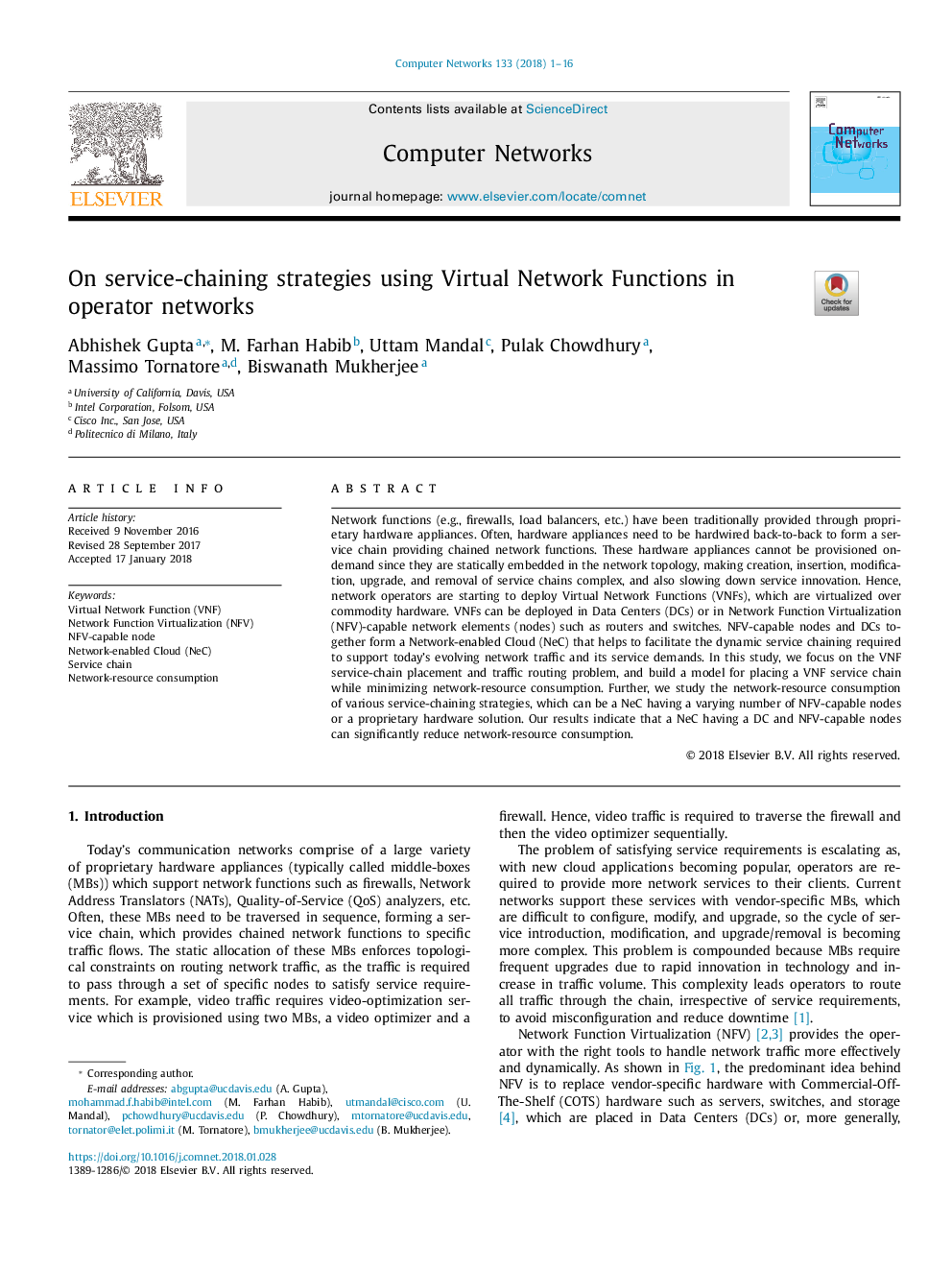| Article ID | Journal | Published Year | Pages | File Type |
|---|---|---|---|---|
| 6882764 | Computer Networks | 2018 | 16 Pages |
Abstract
Network functions (e.g., firewalls, load balancers, etc.) have been traditionally provided through proprietary hardware appliances. Often, hardware appliances need to be hardwired back-to-back to form a service chain providing chained network functions. These hardware appliances cannot be provisioned on-demand since they are statically embedded in the network topology, making creation, insertion, modification, upgrade, and removal of service chains complex, and also slowing down service innovation. Hence, network operators are starting to deploy Virtual Network Functions (VNFs), which are virtualized over commodity hardware. VNFs can be deployed in Data Centers (DCs) or in Network Function Virtualization (NFV)-capable network elements (nodes) such as routers and switches. NFV-capable nodes and DCs together form a Network-enabled Cloud (NeC) that helps to facilitate the dynamic service chaining required to support today's evolving network traffic and its service demands. In this study, we focus on the VNF service-chain placement and traffic routing problem, and build a model for placing a VNF service chain while minimizing network-resource consumption. Further, we study the network-resource consumption of various service-chaining strategies, which can be a NeC having a varying number of NFV-capable nodes or a proprietary hardware solution. Our results indicate that a NeC having a DC and NFV-capable nodes can significantly reduce network-resource consumption.
Related Topics
Physical Sciences and Engineering
Computer Science
Computer Networks and Communications
Authors
Abhishek Gupta, M. Farhan Habib, Uttam Mandal, Pulak Chowdhury, Massimo Tornatore, Biswanath Mukherjee,
